WISCONSIN - The Thursday, May 21 meeting of the Governor’s Task Force on Climate Change, scheduled to take place in Cashton, was instead held virtually. The decision was made out of an abundance of caution due to the COVID-19 pandemic.
At the meeting, committee members heard remarks from Lieutenant Governor Mandela Barnes, who chairs the task force, and from committee chairs. The keynote was provided by Organic Valley’s Vice President of People, Jerry McGeorge.
In addition, the task force heard presentations from four agriculture and natural resources groups:
• Great Lake Indian Fish & Wildlife Commission
• U.S. Climate Alliance
• Monroe County Climate Change Task Force
• Dodge County Farmers for Healthy Soil & Water
The Lieutenant Governor provided an update about what his office had been doing since the task force met last. He said that they are building a website for the task force to provide information for the public.
“In light of the COVID-19 pandemic, the Governor has extended the deadline for our group to provide our report to October 31,” Barnes said. “So that will give us some extra time, and result in some changes in our schedule.”
Barnes told the task force members that Wisconsin is home to 12 indigenous communities, and that environmental justice must be part of all of the work of the task force.
“Lower income people and people of color have been disproportionately impacted by climate change,” Barnes said. “Their communities have been left behind, and addressing generations and millennia of injustice needs to be a part of everything this task force does.”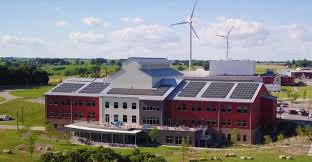
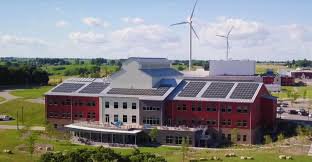
Organic Valley
Jerry McGeorge and Jessica Luhning reported to the task force about Organic Valley’s (OV) approach to sustainability and renewable energy.
“I view climate change as the biggest global challenge that faces us today,” McGeorge said. “Sustainability has been part of Organic Valley’s DNA since our very beginning.”
McGeorge told the task force that OV had made their first solar installation in 2007. Ultimately, the co-op’s goal was to derive 100 percent of the energy used in their facilities from renewable sources.
This led to a partnership with Gundersen Lutheran to install two wind turbines at the company’s Cashton campus.
But it was their ‘Community Solar Partnership,’ which went live in 2019, which finally put the company over their goal of 100 percent renewable energy.
“It is a unique partnership in many ways, that was generated out of a need to raise enough capital to support the project,” McGeorge said. “A partner with capital to invest would realize a benefit through tax credits.”
The partners turned out to be UMAG, which is a consortium of smaller municipal energy companies; Blue Earth for the capital; One Energy who helped with the permitting; and the City of Madison and Dr. Bronners who purchase energy credits.
The output from the 10 projects – nine in Wisconsin and one in Minnesota – is 30 megawatts of power. For the consumers of the electrical energy, they reap the benefits of stable electricity rates over the life of the project.
OV’s Jessica Luhning discussed the cooperative’s development of an innovative ‘Dairy Life Cycle Assessemt’ tool. They are joined in this effort by researchers from UW-Madison.
“Unlike other dairy life cycle assessment tools, ours will take into account soil carbon sequestration,” Luhning explained. “Our goal is to identify what it would take to create a carbon smart farm, and have carbon be one of the farm’s products.”
Luhning described a pilot project they are conducting on a California farm. The project includes looking at whole farm carbon flows, using $3 million in grant funds leveraged from a variety of sources.
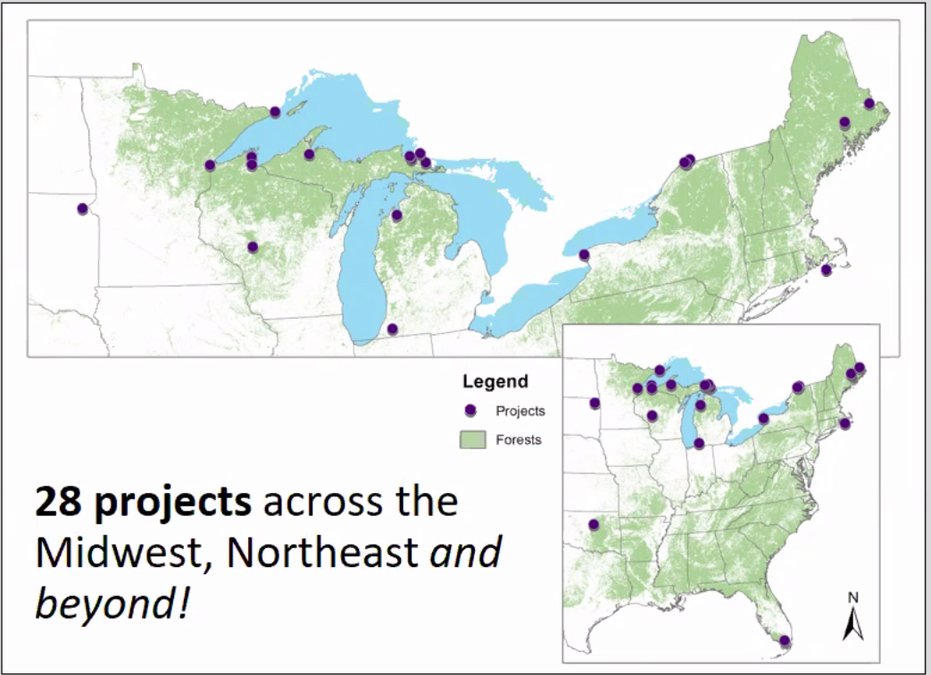
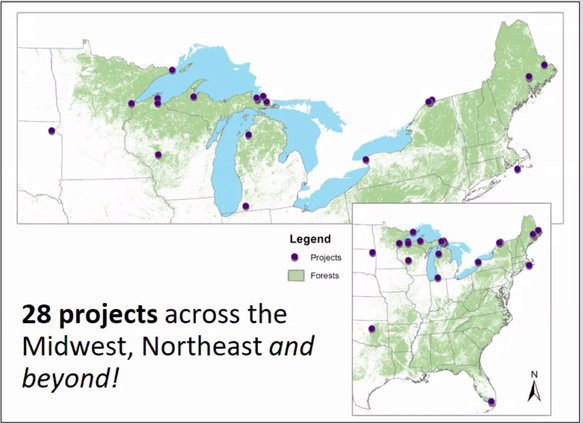
Great Lakes Indian Fish & Wildlife Commission
Rob Croll and Hannah Panci provided a presentation about GLIFWC’s ‘Tribal Adaptation Menu (TAM).’ TAM is a framework the group has developed to integrate indigenous and traditional knowledge, culture, language and history into climate adaptation planning. The menu provides a general guidance for non-tribal partners working in indigenous communities.
“Tribes have been disproportionately affected by climate change,” Croll said. “It has disrupted their food and their ceremonies, and threatened tribal people’s knowledge of living off the land. For instance, climate change has resulted in a disruption of seasonal phenomena that are indicators about when to engage in certain hunting and gathering activities.”
Croll said that in their work with Anishinabe people, they had done a ‘vulnerability assessment’ of what natural systems are most threatened by climate change. For the Anishinable, wild rice, which they describe as a “being,” is their most threatened natural resource.
“Tribal knowledge holds many answers to climate change adaptation,” Panci told the task force. “Tribes need a seat at the table, and TAM is a great resource for the Governor’s Climate Change Task Force.”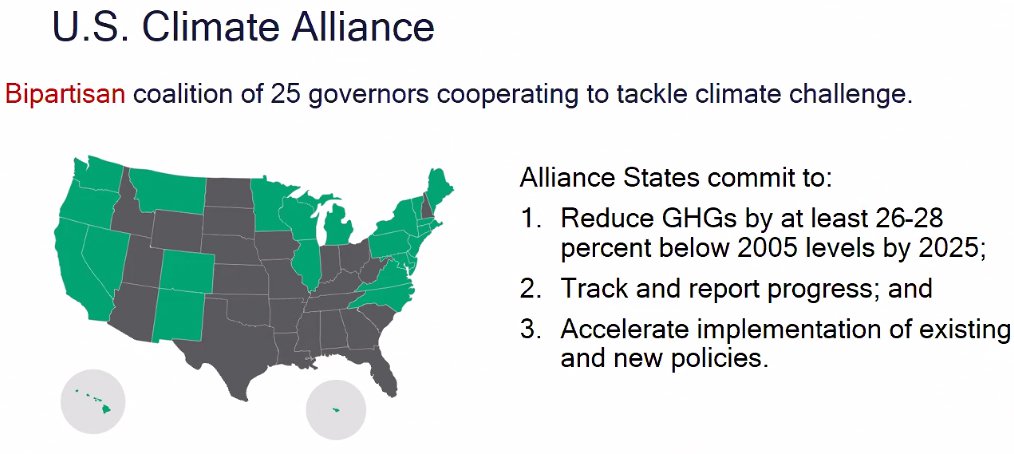

U.S. Climate Alliance
Claire Jahns of the U.S. Climate Alliance described the alliance as a “bipartisan coalition of 25 Governors who are committed to upholding the provisions of the Paris Climate Agreement.
Governor Evers joined the Alliance in 2019. They have nine working groups. Jahns described some of the initiatives the group is working on.
“Wisconsin’s Managed Forest Lands program is a good program, and one we are looking at exporting to other states,” Jahns said. “We also have a group of six states that are working on developing guidelines for climate smart agriculture.”
Jahns noted that reducing on-farm emissions, increasing soil health and soil carbon sequestration all confer multiple benefits. The challenge, she said, is in how to scale it up for a meaningful impact.
“In Iowa and Illinois we see a program that pays farmers $5 per acre to plant cover crops,” Jahns said. “In Nebraska, we have the Soil Health Task Force, started in 2019, which is working on a way to pay farmers for providing ecosystem services, taking a Total Daily Maximum Load (TDML) approach with tradeable permits for water quality.”
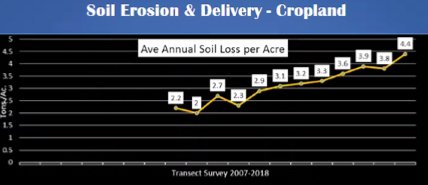
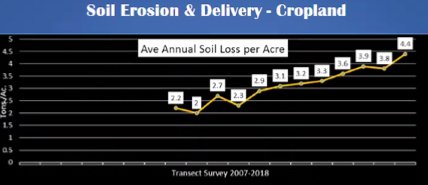
Monroe County
Monroe County Conservationist Bob Micheel discussed the work of their county’s Climate Change Task Force.
“Two thirds of Monroe County is in the Driftless Area,” Micheel told the task force. “In the last 10-15 years we have had numerous 100 and 500-year rain events that have led to catastrophic flooding and even breaches of our flood control dams.”
Micheel said that the event that breached three flood control dams in Monroe County and two in Vernon County had occurred in August of 2018. In 2019, he said the trend had continued with three major events.
“We are operating under conditions of saturated soils both in the valleys and on the ridges,” Micheel explained. “This means when those intense rainfall events happen, the soil cannot infiltrate the water, and it runs off and causes flooding.”
Micheel said that these rain events had also increased soil erosion. He said that between 2007 and 2018, annual soil erosion rates had increased from 2.2 tons per year to 4.4 tons per year.
“Five watersheds start in Monroe County,” Micheel said. “And I’ve taken to referring to the Monroe-Vernon county line as the new equator.”
Micheel said that in 2018, rainfall amounts between April and December were more than 60 inches. A typical year’s rainfall, Micheel explained, is about 30 inches.
It was out of a sense of urgency to protect lives and property that the Monroe County Board of Supervisors voted unanimously to form the Climate Change Task Force in 2019.
“We have a list of 10 goals that we are working on, so far,” Micheel said. “But first and foremost is putting in place a warning system so that we can protect lives.”
To this end, the task force is working with the Iowa Flood Center and the National Weather Service in LaCrosse to put together a system of monitoring stations that will provide data not just on stream flow, but also on stream levels.
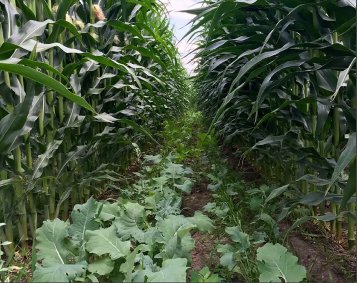
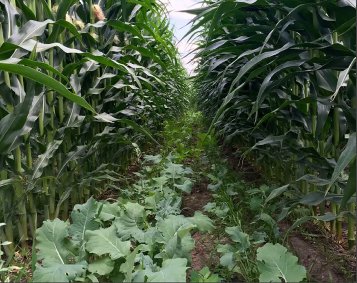
Dodge County
Tony Peirick of the Dodge County Farmers for Healthy Soil & Water talked about the work of their group, and how they had gotten started.
“In our area we have three lakes,” Peirick explained, “Our group has come together around a desire to protect our lakes.”
Peirick said that changes in the weather, with excessive rains or droughts, is impacting farmers greatly. He said that his group’s approach is to focus on spreading the message of soil health.
“Tillage ruins the soil, destroys its structure, and produces runoff,” Peirick said. “No-till keeps the carbon in the soil, and soil is actually one of the planet’s greatest carbon sinks. Cover crops also help to build soil health and sequester carbon.”
Peirick has been a leader in modeling innovative agricultural practices to other farmers. These practices not only help to protect the environment, but also the farm’s bottom line.
“First it was soil health, reducing inputs, and planting cover crops,” Peirick said. “More recently, I have experimented with planting green (planting a cash crop into a living cover crop), and even going from planting three-foot rows to six-foot rows, which gives the covers planted between more sunlight to grow and capture carbon and nitrogen in my soils.”
Peirick also said he recognizes that consumer demand for grazing is a trend that is “here to stay,” and if farmers can adjust their production, there is a significant economic opportunity for them in grazing. With more grass on the landscape, it will be easier to protect our ground and surface waters, and sequester more carbon.
“DATCP has created wonderful educational resources for farmers, and a farmer is always going to listen more to another farmer,” Peirick said. “There are now 28-30 of the DATCP-funded farmer watershed councils in the state.”




